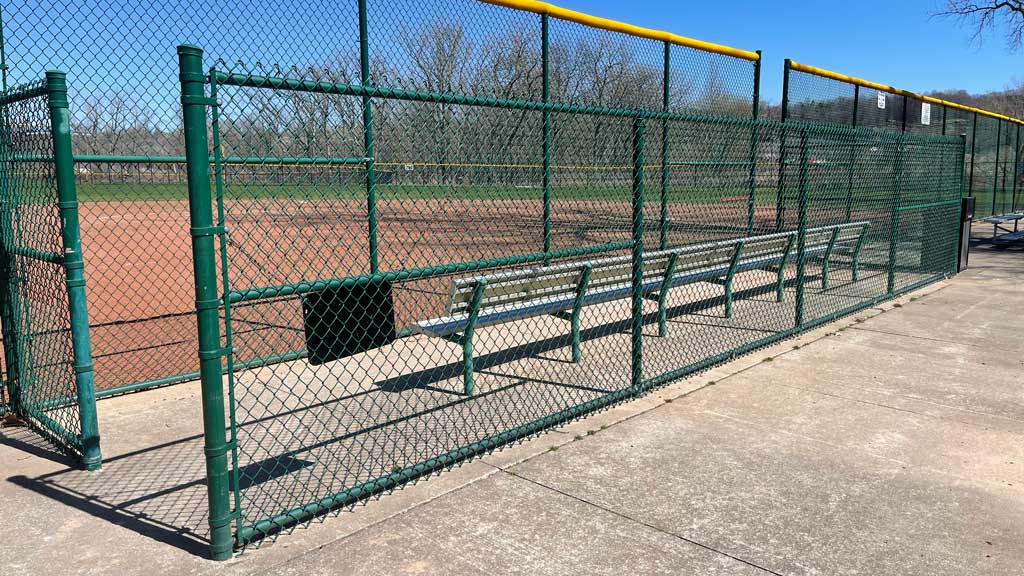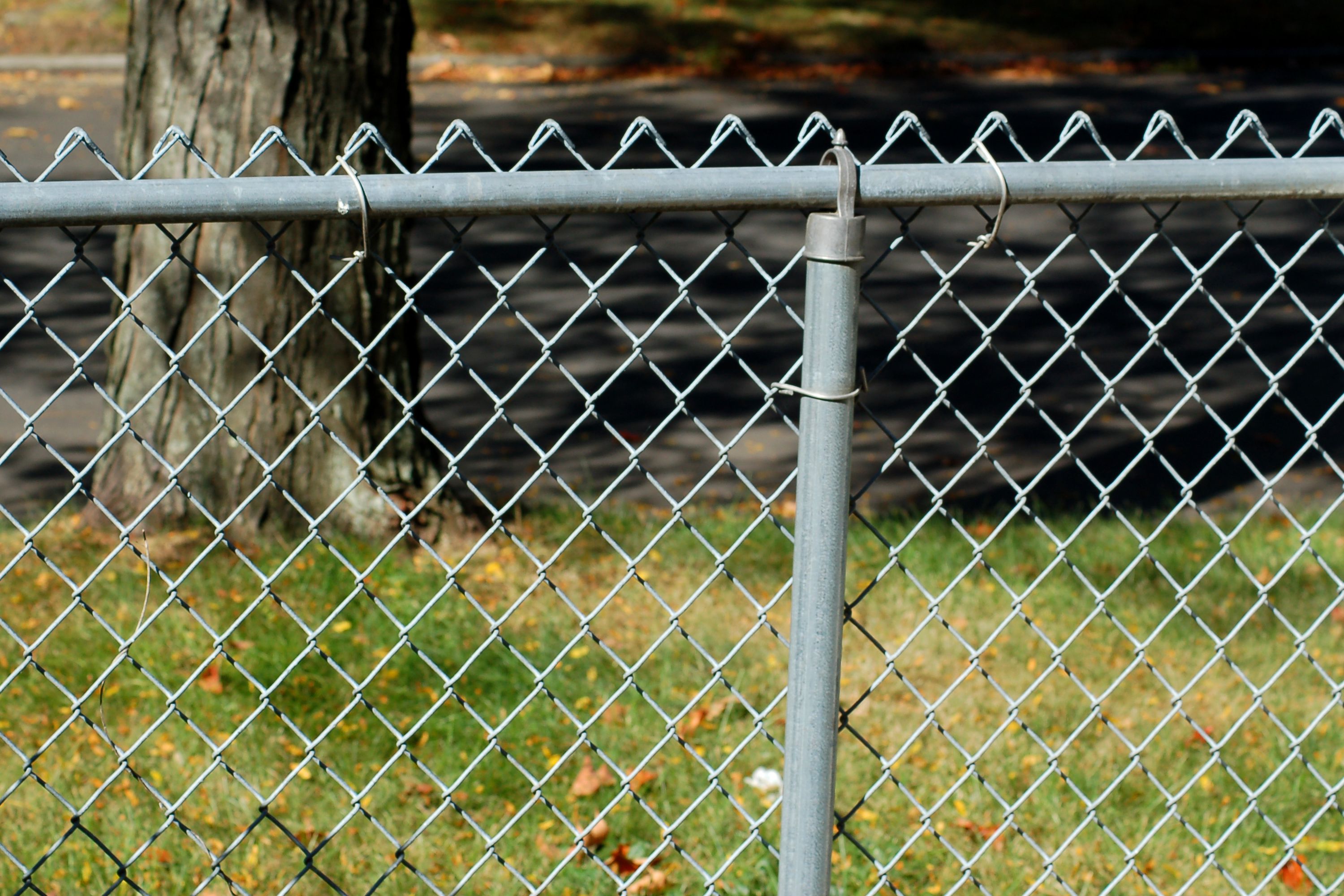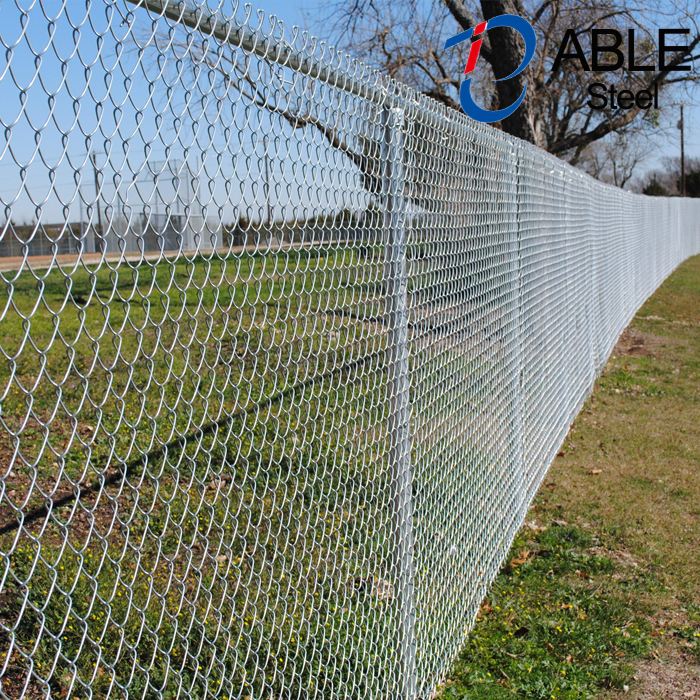The production process of a Chain Link Fence typically involves the following steps: 1. Wire Drawing: The first step is to draw the wire, which involves pulling a metal rod through a series of dies to reduce its diameter and increase its length. This process helps in obtaining the desired thickness and strength of the wire. 2. Galvanization: The wire is then galvanized to protect it from rust and corrosion. It is immersed in a hot zinc bath or passed through a zinc coating machine to apply a layer of zinc on its surface. 3. Weaving: The Galvanized Wire is then fed into a chain link machine, which weaves it into a diamond-shaped mesh pattern. The machine consists of multiple spools of wire that move vertically and horizontally to interlock the wires and form the chain link pattern. 4. Tensioning: Once the chain link mesh is woven, it is passed through a tensioning machine that stretches and straightens it to remove any slack. This process ensures that the fence is taut and properly aligned. 5. Cutting and Rolling: After tensioning, the chain link fence is cut into desired lengths using a cutting machine. The cut sections are then rolled onto spools or packaged into rolls for transportation and storage. 6. Fitting and Assembly: Additional components such as posts, rails, and fittings are attached to the chain link fence to complete the assembly. These components are typically made of metal and are used to secure the fence to the ground or other structures. 7. Quality Control: Before the chain link fences are packaged and shipped, they undergo quality control inspections to ensure they meet the required standards. This includes checking for any defects, measuring dimensions, and verifying the galvanized coating thickness.
The application of a chain link fence can vary depending on the specific needs and requirements of the user. Some common applications of chain link fences include:
1. Residential use: Chain link fences are often used in residential properties to provide security and define property boundaries. They can be installed around the perimeter of a house or yard to keep pets or children safe, prevent trespassing, and deter theft. And it can have the Razor Wire for supplement to get more security.
2. Commercial use: Chain link fences are commonly used in commercial properties such as warehouses, factories, and construction sites. They can be used to secure the premises, protect valuable equipment or materials, and control access to restricted areas.
3. Sports facilities: Chain link fences are frequently used in sports facilities like tennis courts, baseball fields, and soccer fields. They serve as a boundary marker, preventing balls from going out of bounds and ensuring the safety of players and spectators.
4. Schools and playgrounds: Chain link fences are often installed around schools and playgrounds to create a safe and secure environment for children. They help keep unwanted individuals out and provide a clear boundary for supervision.
5. Public areas: Chain link fences can be found in public areas such as parks, parking lots, and government buildings. They help control pedestrian and vehicle traffic, provide security, and prevent unauthorized access.
6. Animal enclosures: Chain link fences are commonly used to create enclosures for animals, such as dog runs, kennels, and livestock pens. They provide a secure and contained space for animals to roam and prevent them from escaping.
7. Industrial use: Chain link fences are frequently used in industrial settings to secure machinery, equipment, and storage areas. They help protect valuable assets from theft or damage and ensure the safety of employees.
Overall, the production process of a chain link fence involves wire drawing, galvanization, weaving, tensioning, cutting, fitting and assembly, quality control, and packaging. Each step is crucial in producing a high-quality and durable chain link fence.



